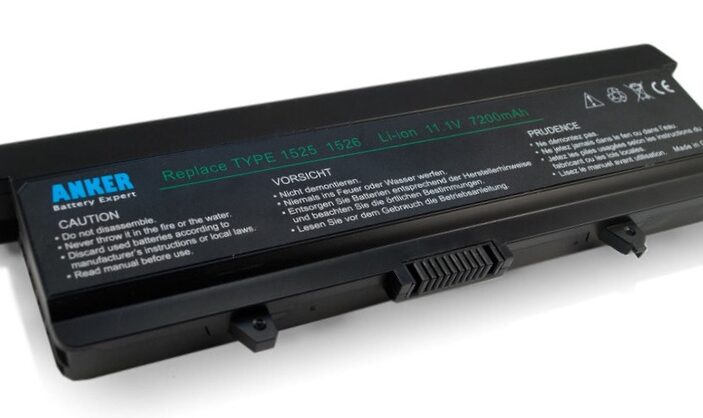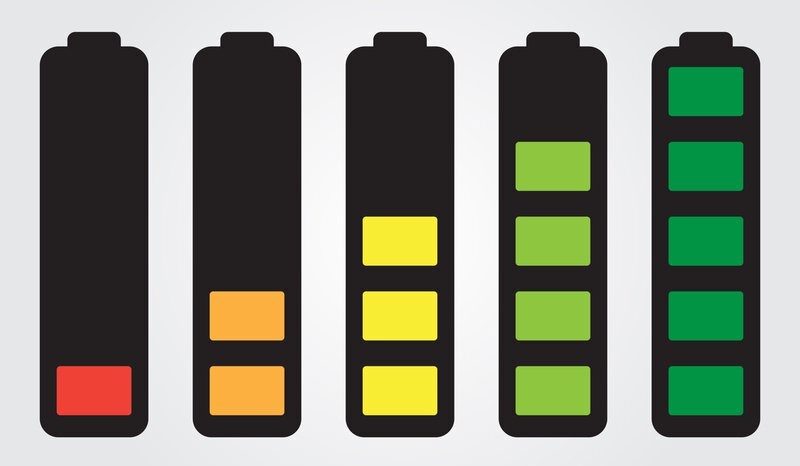The battery on your laptop is one of the most important components, as it is responsible for powering your device and enabling it to go mobile. Yet, you may not realize just how quickly it can wear out! So, how to check laptop battery wear level? Keep on reading to learn the method!

What Is the Battery Wear Level?
The more batteries age, the more their capacity decreases. If you notice a 5% decrease from 4000 mAh (when it is new) to 3800 mAh, that is the battery wear level!
It can even drop even more after each year due to careless use. This might seem like insignificant points, but the figure will significantly escalate over time!
The main cause of this issue is deep charge cycles. In fact, charging all the way up and then letting it die out again at 0% will do more harm than shallow (i.e., charging 70% for 30 minutes) charging! That is because there would be more stress put on the batteries, which causes irreversible damage to cells and increases the heat inside your device’s unit. This leads not only to a shorter life but also affects performance drastically!

How to Check Laptop Battery Wear Level?
Here in this section, we’ll provide methods for both Windows and Mac devices!
On Windows
1. Open your Windows start menu by clicking the Start button (or hitting the Windows key on your computer).
2. Then, you need to find an app called Command Prompt. The best way to look for it is to start entering “Command Prompt” into the search box since it would show at the top of the results very fast.
If it doesn’t work, you have to manually go down the Start Menu’s app list to the Windows System area, then look for Command Prompt there. To access the Command Prompt app, simply double-click it.
3. Once the Command Prompt is open, you should see a black box with white letters that spell out a command line, which will most likely begin with C: and end with your Windows user name. Now, let’s get down to business! Type in powercfg /battery report (with a space between the two phrases), and then press Enter.
If all goes well, you should get a notification in the Command Prompt saying that a pin report has been stored in your user folder. Until now, you have done an outstanding job.
4. Following that, you have to locate and read the report. The quickest method is to launch File Explorer ( you can enter “File Explorer” in the Start Menu search box if you can’t locate it) and browse to the folder where the Command Prompt said you had saved your pin report.
This is usually your user folder (C: Users/[yourusernamehere]), but if you can’t see it there, try looking for it on your hard drive. To begin a search, open your Start Menu and type in “battery report”. If it doesn’t appear right away, be patient and wait for a couple of minutes to try again. Windows might take a while to import new files and index them for search reasons.
5. Now, take a look at the report! The report should appear as a long list of data, with power life predictions and use records included.
Our recommendation is just to skip other parts and go straight down to the power source life estimates section. You’ll see estimations of how long your power source should last based on how you’ve used it.
*Note:
Keep in mind that these are just auto-generated estimates, so you’ll probably encounter some weird math or perplexing figures once scrolling down the list, especially if you have used your laptop irregularly recently or haven’t touched it in a long time.
The figures under the Active header are the most essential to pay attention to, as these are estimations of how long the power source might have lasted depending on your device use. They are presented in hours, minutes, and seconds.
Also, please remember that the Active battery life estimates are divided into two columns: At Full Charge and At Design Capacity.
For a full charge, its figures estimate how long your power source would last, relying on its current capacity; meanwhile, at design capacity will give you an estimation of how long the power source could have lasted when it was new from the manufacturer.
Once your laptop’s full charge capacity typically falls 25 percent to 50 percent below its original capacity, it’s definitely time to start thinking about a replacement!

On Mac Os
The technique of determining the health of Mac’s batteries is far easier than with Windows.
- To check the condition, go to the Apple menu and choose System Preferences.
- Next, you select battery and then click battery again. Or, maybe you can do this: Press and hold the Option button, then click on the pin symbol appearing on your menu bar.
- Subsequently, click Battery Health in the lower right corner. You will see either of the following circumstances present:
- Normal: It is in good working condition.
- Recommended service: It functions correctly, but its capacity to retain a charge is decreased. You may think about replacing the power source in this case!
*Note: There are times that your minicomputer’s pin may not work properly, regardless of the quantity of charge it shows. In that case, we would recommend you to bring your device in for a tune-up ( best to do it yearly).
FAQs
1. Is It Okay to Leave a Dead Battery in a Laptop?
Yes, it is okay to do that. More specifically, portable computers are basically a desktop variation – they use less power but include a built-in screen, keyboard, and, most crucially, a power system!
A PC with a dead power source will operate on AC and function as a (low power) device. So, If no problems arise, you can use your notebook in this way until it completely dies.
2. How Many Years Should a Laptop Battery Last?
Generally, it can last around 1,000 complete charges (or 2 to 4 years). Several elements determine the total lifespan of it, such as the type of it (NiMH, NiCad, or Li-ion), how often the user uses it, and its age. It’s also worth noting that performance might deteriorate with time!
3. Is it Worth Replacing the Laptop Battery?
It depends; you can still use the notebook with a dead pin. As the new power source you buy will eventually die at a certain time, it is fine if you don’t want to spend your money on replacing it (if the old one does not show any other issue).
If there are any other problems, it would be best if you said goodbye to the notebook! Think carefully and make the right decision; it’s all up to you!
4. Is it Okay to Leave Your Laptop Plugged in All the Time?
Having your notebook plugged in the all-time round will harm its health, as too much heat can destroy its power over time. When you have many programs open simultaneously or when you use processor-intensive apps like games, you will generate more heat.
Therefore, if your computer becomes too hot while plugging in, remove the charger and store it somewhere cold to avoid heat damage!

Conclusion
In order to avoid a sudden shutdown, you must know how to check laptop battery wear level periodically! A new device may have the best features available, but it will eventually run out of power quickly due to careless use and maintenance! Make sure that you take note of all the information we’ve provided above to grasp the condition of your device!

Paul Sullivan is the leading writer for articles on our website. He has over 10 years of experience as a technology reviewer, especially on laptops and computers.
With his long experience, we believe that he will bring you accurate and valuable knowledge and assessment.


